Pisz-Warmian-Masurian 作者: 来源: 发布时间:2021-10-27
Ⅰ. Population and Area
Population (2016)
• Total 19,466
• Density 1,900/km2 (5,000/sq mi)
Area
• Total 10.08 km2 (3.89 sq mi)
Website http://www.pisz.pl/
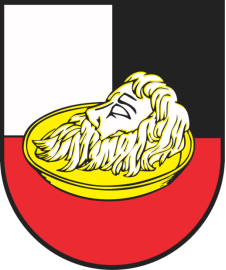
Ⅱ.Natural Geography (environment and resources)
-The city is located in the southeast of the Warmian-Masurian Voivodeship in historic East Prussia, 110 kilometers east of the voivodeship capital Olsztyn (Allenstein) in the former Prussian tribal area of Galinden . Here the Pisa rises from the Roś ( Roschsee , formerly Lake Warsaw ), which belongs to the Masurian Lake District . The largest Masurian lake, the Śniardwy (Spirdingsee), can be reached via the six-kilometer-long Kanał Jegliński ( Jeglinner Kanal , also Wagenauer Kanal ) . The forests of the Puszcza Piska (Johannisburger Heide) extend to the south.
-Transport
-Street
-Pisz is located at the intersection of two major Polish national roads :
-the major road 58 , which in west-east direction from Olsztynek (Hohenstein) up into the already in the Podlaskie preferred Szczuczyn leads, and
-The state road 63 , which runs in a north-south direction from the Polish-Russian to the Polish-Belarusian border.
-The individual localities of the municipality are well connected to one another via secondary roads and country lanes.
-Rail
-The Olsztyn – Ełk railway runs through the urban and rural commune. Up to 1945 there were two other railway lines: the Lötzen – Johannisburg railway and the Johannisburg – Fischborn railway (meanwhile to Kolno ). Both were no longer in operation in 1945 due to the war.
-Water
-Pisz is located on the Masurian waterways and can be reached by houseboat. There are numerous marinas and hotels in the area. In the summer months there can be problems with the water level. The Pisa can only be navigated with houseboats with a shallow draft. Otherwise, Pisz is the final destination for houseboats.
-Air
-The Gdansk Airport can be reached after a long journey.
Ⅲ.Economy
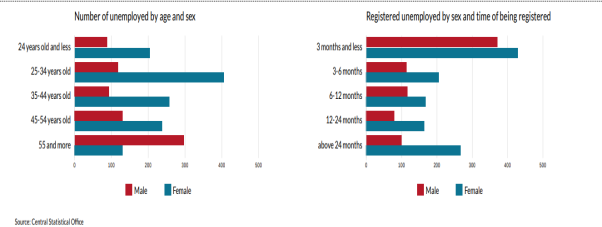
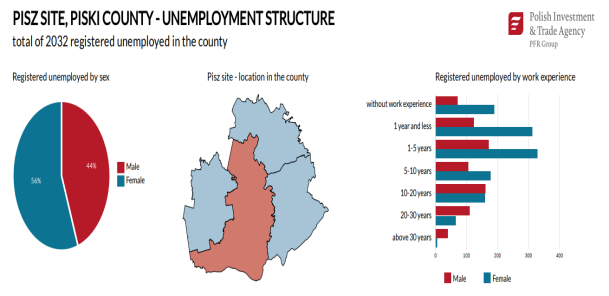
-Pisz welcomes tourists not only with beautiful bicycle paths and a well-equipped beach (with an eco-marina) on Lake Roś, but also with a rich accommodation base. Pensions and hotels await their guests in spring, summer, as well as in autumn and winter. Are these not sufficient reasons to attract investors to our city?
-If the answer is still "no", then the concept of creating a fishing estate along Kopernika Street should convince the most undecided to change their minds. The shopping arcade, referring to the Masurian architecture at the turn of the 18th and 19th centuries, is to develop small services, trade and gastronomy. An additional advantage is the proximity of the old market square, the Pisz Cultural Center with
-The amphitheater, where national cultural events take place. In the newly created inner port, 36 berths await canoeists, motorboats and sailors.
-The port on the Pisa River has a chance to be called the "Paradise for the Active". It is there, in close proximity to the remains of the former Teutonic Castle, lovers of active leisure by the water are to start and end their navigable adventure on the Great Masurian Lakes trail. In order for "Brama Mazur" to open its gates to tourists even more, the Pisz Commune wants to develop the Pisa waterfront as soon as possible, as well as revitalize the park and the zone of the former Teutonic Castle. In order to meet the expectations of the already existing port, it is planned to build all facilities with infrastructure and taverns. Therefore, it is a perfect place not only for tourists, but also for investors.
-We have 0.5 ha of land prepared for service development: trade, tourist and catering services, accommodation, recreational and sports facilities and accompanying facilities related to port service, such as: a tavern, a sailing shop, boat repair services, etc. - he says Andrzej Szymborski, Mayor of Pisz.
-Investments related to tourist services, gastronomy, accommodation, taverns, etc. in the vicinity of the port can be implemented both by one large investor as one project, as well as by smaller investors according to a common concept.
-The intentions are ambitious, so each stage of the investment must be buttoned up to the last button. Numerous archaeological research has confirmed the need to create educational and historical paths with the use of contemporary visual and multimedia forms. In order to better reflect the former atmosphere of this place, the designation of the castle embankment from the time of the Prussian fortress was planned, as well as the exhibition and conservation of the protruding walls and foundations hidden under the ground. According to the designer's intention, the scale of the project will be admired from the steel observation tower. Looking down from the platform, we will find out where the defensive moat used to run.
-Pisz lies in the heart of the Green Lungs of Poland, where nature protection is one of the priorities. In order to emphasize the values of our beautiful land even more, the park is to be divided into three areas of ornamental trees. Hornbeams and other noble deciduous trees will make it possible to form a six-pointed crown, which will emphasize the former outline of the castle, along with the northern and southern towers. Shrubs diversify the colors of the park, while oaks and beeches will lead us along the avenues of the charming quay to the port located in the very center of the city. There you will be able to recharge the batteries for a further journey or stop for a longer time to breathe clean air.
-It will be even more beautiful in the future. The concept provides for the construction of a port tavern, which will overlook the river, the ubiquitous greenery and the remains of the former Teutonic Castle should stimulate the imagination. In addition, sheds, gazebos and, of course, technical facilities for the port are to be built.
-Investors in the Pisz Commune can count on low taxes, allowances and investment incentives tailored to the investor's needs, moreover, support in the form of an assigned employee who will deal with contacts with other Offices, will help in the implementation of the investment.
-http://www.pisz.pl/
Ⅳ.Industrial Characteristics
-Due to natural resources comprising the reach forestry and shallow deposits of bog iron ore, the industrial traditions of Pisz are connected with wood processing (the sawmill) and metallurgy. There are iron works in Wądołek, as well as the industrial smithies in Wiartl and in Jaśkowo. The wood processing industry has a long tradition in Pisz. The core of the industry is its sawmill, supporting a broadbase plywood industry with a plant called Zakłady Przemysłu Sklejek.
-Pisz is a centre of tourism industry, with boat trips, canoeing and kayaking along the Krutynia River, as well as with popular yachting voyages on the Masurian Lakes known in Polish as Kraina Wielkich Jezior. On the shore of Nidzkie Lake there's the K. I. Gałczyński Museum in Leśniczówka Pranie. There is a museum in the 9th century granary displaying historical artifacts and a notable collection of antlers. There are horse and horse-drawn carriage trips. The town is surrounded by the largest forest complex of the Masuria region, known as Puszcza Piska (Piska Primeval Forest) with eleven nature reserves.
-https://en.wikipedia.org/wiki/Pisz#Economy
-Key projects
-1. PISZ COMMUNITY PROTECTION PROGRAM FOR 2019-2023 WITH A PERSPECTIVE TO 2026
-http://bip.pisz.hi.pl/index.php?wiad=20820
-2. The second stage of the bridge crossing
-The subject of the agreement is to establish the principles of cooperation in the construction of the second stage of the new route of the national road No. 63 in the town of Pisz according to variant III, on the section from the intersection of Kwiatowa Street and Klementowskiego Street in Pisz through the new route, i.e. on the extension of Kwiatowa Street along the railway siding through the newly designed viaduct over the railway line to the newly designed intersection with Orzyska Street.
-http://bip.pisz.hi.pl/index.php?wiad=5465
Ⅴ.Attrations and Cityscape
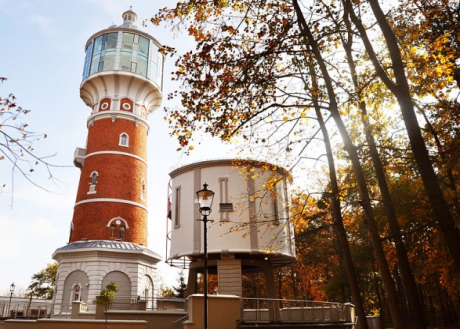
wieza cisnien pisz
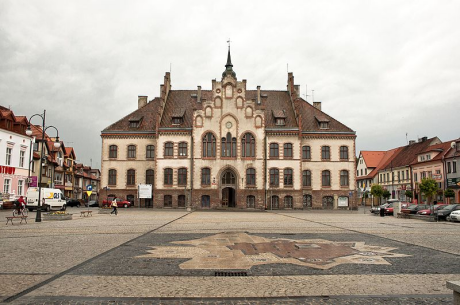
Pisz town hall
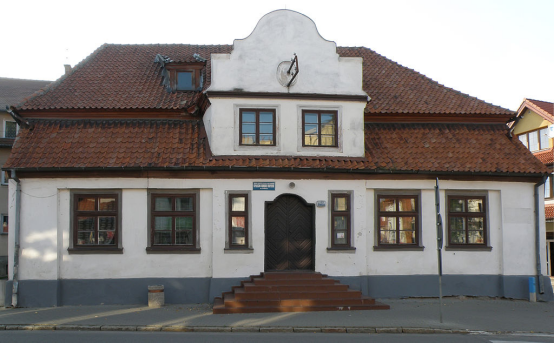
Royal House (Dom Królewski)
Church building
Since 1945 the previously Protestant church has been a Catholic parish church [13] , which is named Kościół św. Jana Chrzciciela ( German Church of St. John the Baptist ) carries. The building has been rebuilt several times or its interior has been adapted to the changed liturgical customs. Much of the former equipment could be taken over.
Parish
Sacred Heart Church in Pisz
Johannisburg has had its own Catholic parish since 1869. It was included in the Deanery of Masuria II with its seat in Johannisburg and belonged to the diocese of Warmia. The number of church members was small. It rose sharply after 1945 when Polish new settlers, almost without exception, of the Catholic denomination, settled here and dared to start again after the war. Today there are four Catholic churches in the city, of which the Church of St. John the Baptist is the oldest. The other three were created in the 1990s. These are the churches
Św. Jana Chrzciciela
Św. Józefa Oblubieńca NMP
Matki Miłosierdzia Ostrobramskiej
Najświętszego Serca Pana Jezusa.
The churches are all incorporated into the Pisz deanery, which belongs to the Ełk diocese of the Roman Catholic Church in Poland
-Sights
-City church , new building in 1843 (largest half-timbered church in the region), the 35 m high tower of the old church has been preserved
-Baptism angel (1704) taken over by Isaak Riga as church decoration in the new building
-Town hall, relatively simple neo-Gothic building from the late 19th century
-various town houses
-Wall and cellar remains of the castle
-wooded surroundings of the Johannisburger Heide
-Water tower, built in 1907, converted in 2013
Ⅵ.History and Culture
-Middle Ages
-The starting point for the development of Johannisburg was a fortification of the Teutonic Order, which the Grand Master Heinrich Dusemer had built in 1345 to protect the river crossing and to defend it against the neighboring Lithuanians. These attacked the fortress in 1361 and 1366 and conquered it in their second onslaught. The wooden facilities were set on fire and the crew evicted. After the Lithuanians withdrew from the area again, the cremated fortress was replaced by a stone castle, which was completed in 1378.
-In the meantime, hunters, booters and fishermen had settled in the area of the castle. In order to further promote the place, in 1367 the commander of Balga, Ulrich Fricke, awarded him the hand festivals of the Teutonic Order. Further settlement of the surrounding area took place later in the first half of the 15th century, in 1450 35 villages were mentioned there. The time had come for the order to grant Johannisburg city rights . It should be with that of Grand Master Ludwig von Erlichshausenon May 15, 1451 will be manifested and financially secured by the transfer of 200 Hufen land. But since the order was at war with Poland at this time, no one was found who could initiate the enforcement of the city law. Johannisburg was cremated during the Prussian City War in 1455 and the Equestrian War in 1520.
-Early modern times
-After the religious order was converted into a secular duchy in 1525, Albrecht I of Brandenburg-Ansbach took care of the economic development of the place. The castle was expanded, further fortified and designated as the seat of the governor. How closely the duke was connected to Johannisburg became clear when he stayed there during the plague year of 1549. The spread of the Protestant faith, also promoted by the Duke, was carried out in Johannisburg by the reformer Martin Glossa, who was banished from Polanddriven forward. The profitable border trade with Poland, whose border ran only a few kilometers to the south, allowed the economic power to grow further, which prompted the residents to try again for city rights. The request made to Margrave Georg Friedrich in 1594, however, remained unheeded. It was not until the Great Elector Friedrich Wilhelm issued the town charter on September 6, 1645. The defensive strength of the city was reduced during the attacks by the Tatarsproved in the years 1656 and 1657. With the help of the electoral troops led by Lieutenant Colonel Friedrich von Arnheim, all attempts at conquest were repulsed. Johannisburg was partially destroyed in a city fire in 1687, and the town hall was also a victim of the flames. The plague claimed many victims in the years 1709 to 1711. Apparently only 14 citizens survived. From 1714 to 1816 Johannisburg was a garrison town of the Prussian army. During the Seven Years' War (1756–1763) the Russian Colonel Selebrikov occupied the city with his troops.
-19th century
-During the Napoleonic Wars in 1807 and 1812, Johannisburg suffered again from high demands for contributions and looting, both under French and Russian occupation. From January 23 to 26, 1813, the Russian Tsar Alexander I stayed in Johannisburg.
-With the Prussian administrative reform of 1815, Johannisburg was named the district town of the district of the same name. Economic life recovered from the damage of the previous wars, and the timber industry in particular expanded. In addition, the grain trade and linen weaving were the most important sources of income. The new construction of the traffic routes had an advantageous effect. In addition to the road to Ortelsburg and the Polish Grajewo, the connection to the Allenstein – Lyck railway line in 1885 was of considerable importance. The number of inhabitants rose to 3,481 by 1900, while in 1782 only 1,141 people lived in the city.
-20th century
-The modest prosperity was wiped out again with the First World War. From September 1914 to February 1915 the Russian army occupied Johannisburg, destroyed large parts of the city and deported 1,586 men, women and children to Siberia. During the war, reconstruction began as part of the East Prussian aid initiated by the Reich government, with Leipzig as a sponsor city. In the referendum on membership of Germany or Poland, ordered by the Versailles Treaty in the Allenstein voting area, on July 11, 1920, 2,940 votes were cast in the city of Johannisburg in East Prussia, none in Poland. ImDistrict Johannisburg received 34,036 against 14 votes clearly in favor of remaining with East Prussia and thus for Germany. The influx of residents from West Prussia, which was lost to Poland, let the population grow again to 5,186 in 1925.
-Towards the end of World War II, Johannisburg was bombed by Soviet forces on January 19, 1945 , which resulted in the destruction of almost two thirds of the buildings. On January 24th, the city was captured by the Red Army without a fight. Soon afterwards Johannisburg was placed under Polish administration together with the southern part of East Prussia. Polish civilians then immigrated. Johannisburg was renamed Pisz. Where German citizens had not fled, they were in the period that followed sold.
-The place name Pisz refers to the small river Pisa, a tributary of the Narew , which like two other rivers in East Prussia was also called Pissek in German . The largest part of the Johannisburg district today forms the Powiat Piski.
Ⅶ.Other Information
-The name Pisz originates from the word "pisa", meaning "swamp" in the ancient Prussian language. Johannisburg received the name of the castle in 1645, when it became a city by the decree of Frederick William, Elector of Brandenburg. The local people of Masuria called the castle "Jańsbork", and this name remained until 1946.
Ⅷ.Contact Information
-Government
- • Mayor Andrzej Szymborski
-Town Hall in Pisz ul. Gustawa Gizewiusza 512-200 Pisz
-Tel. (87) 423 52 10
-Fax (87) 424 12 38
-e-mail: pisz@home.pl
